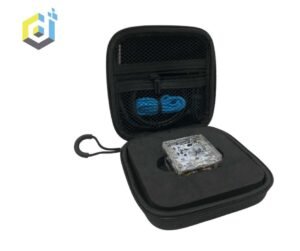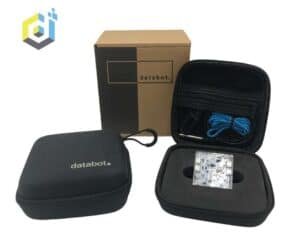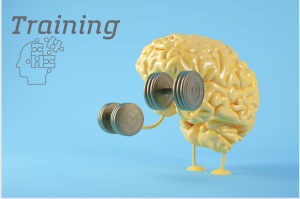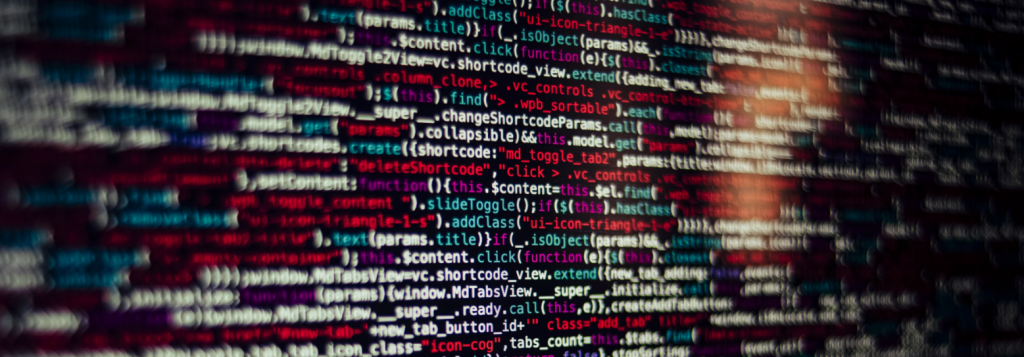
databot™ Does Data - and Much More
databot™ evolved from a long list of criteria requested by educators and administrators who were looking for something that was affordable, approachable, and scalable as well as highly versatile for teaching. Imagine a single, product that you can use to teach activities in Life Science, Chemistry, Earth Science, Physics, and Environmental Science. Then add in the ability to teach STEM activities such as coding in Python, Arduino, Scratch and more. Now, integrate it into your existing robotics systems like Sphero, LEGO, Arduino, and more. Wow. Make sure it is tough-as-nails, fun, beautiful, and easily shipped, stored, and supported for virtual education programs. Make it affordable enough and logistics-friendly enough that it can support scaling for projects in 30,000 schools easily. Finally, add in the ability to teach activities in data science, machine learning, AI, and the highlight on today’s menu – data literacy. Voila – meet databot™!

![]()
Data literacy is the ability to read, understand, create, and communicate data – arguably a literacy metric of extreme importance in the 21st century. This blog begins a series of investigations into the world of data literacy education – who is working on it, why it’s an important foundational skill for students, and how can we all get involved in building a more data-literate world.
Meet Kate Strachnyi - DATAcated to Data Literacy

Kate Strachnyi, DATAcated Academy
Kate Strachnyi spent eight and a half years in risk management for Deloitte before leaving the industry to found Story By Data, and later, DATAcated Academy, where she offers courses on data analysis and visualization tools such as R, Python, Tableau, Power BI, Qlik, and more. Kate specializes in data visualization and in addition to teaching data science to adults and power users, she even takes it down to the level of children in workshops and a book she co-authored called “Data Literacy For Kids.” One of her goals is to improve data literacy for the general population so that we all better understand the data that we see on a daily basis and promote teaching these skills at an early age.
“I saw this bar graph in a news source in which the numbers were accurate, but the graphic bars were completely incorrect. They simply didn’t match – and nobody noticed! “
Why is data literacy important? Most people don’t understand the power of the data tools in use these days. Every click and move of your mouse, every query you place and every purchase you make is logged. We all need to be aware of this at an early age and form healthy habits to protect ourselves. Data literacy also drives our critical thinking and decision making processes. If you’re trained in critical thinking, you don’t just automatically retweet, repost, share, and endorse a post that might align with your natural tendencies, you take the time to look at the information behind it. Is it supported? Is it accurate? Collectively we can help our students dispel the “fake news” dilemma by learning to question the sources of information, understanding how data is gathered, and finally, how it is visualized and presented.
So what does the future hold for our planet as these children of the data generation grow to adulthood? Great things if we all work together to build responsible citizens capable of discerning good data from good spin – citizens capable of thinking for themselves. Early intervention, as in so many other things, might be a key component to building data literate, responsible citizens who will ensure the survival of our species now and in the future.
“Kids really get this stuff – creating bar charts from Skittles and M&Ms was incredibly successful for teaching pre-K students about how to visually compare numbers. The biggest challenge was keeping them from eating the data.”

Data can be delicious!
The databot™ Data Literacy Series
Data literacy – what is it and why is it important? In this blog series, we’ll be exploring the why and how of data literacy programs in play today. If you think about the world we live in it becomes evident quickly that the ability to read, interpret, and communicate data clearly might be the most valuable skill on the planet in the 21st century. Self driving cars, autonomous drone fleets, business intelligence that feeds us the exact advertising at the exact time required to convert our purchase – all of this is powered by data.
As citizens of a data driven world it is our responsibility to become data literate to make informed decisions. When students work on data driven activities with databot™, they are building valuable skills in the collection, visualization, and interpretation, and communication of scientific data. These skills are transferrable to all other types of data whether it is business intelligence, Covid 19 statistics, or the latest data from Mauna Loa Observatory telling us our planetary CO2 levels are continuing to rise.
Critical for Careers: A competent grasp of data is probably required to be successful in any career of the 21st century, and one select career track, data science, is growing by leaps and bounds. By 2026 the US Bureau of Labor Statistics estimates there will be 11.5 Million jobs in data science, and for the past four years running Glassdoor has named data science its number one job. You can read an article with more details here, see some of the top applications of data science in the real world, and also see some of the hefty salaries ($80K-160K average) that employees with this skill set are taking home. Importantly, this all starts with basic competence in data literacy!
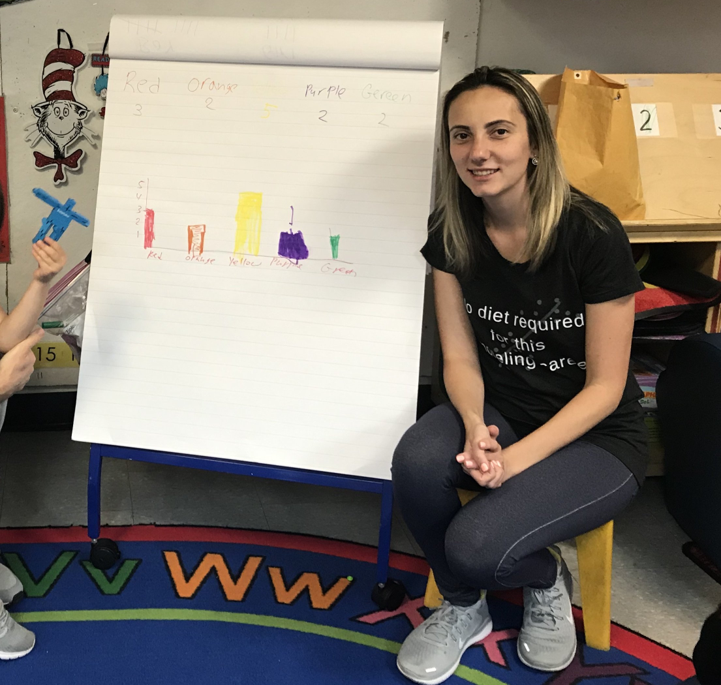
A big thank you to Kate Strachnyi for her volunteer spirit that carries her into Pre-K workshops, her passion for promoting data literacy, and her contributions that are developing the data scientists of tomorrow.

Important Practices to Master: The Next Generation Science Standards (NGSS) are an impressive body of work developed to guide science education for the 21st century. One of the three cornerstones of the NGSS are the eight Science and Engineering Practices that are identified as essential for all students to learn. Importantly, the 4th practice is Analyzing and Interpreting data. Whenever students are conducting data oriented activities such as those using databot™, they are learning to collect and analyze data – an invaluable skill that can be applied to any career of the 21st century. The more comfortable we can make our students when interacting with data today, the more successful they will be tomorrow.
databot Rocks! Get Yours Today!
-
databot
databot – Twin Pack
$375.00 Select options This product has multiple variants. The options may be chosen on the product pageRated 0 out of 5 -
databot
databot – Class Pack
$1,850.00 Select options This product has multiple variants. The options may be chosen on the product pageRated 0 out of 5 -
databot
databot Training Modules
$399.00 – $1,000.00 Select options This product has multiple variants. The options may be chosen on the product pageRated 0 out of 5

